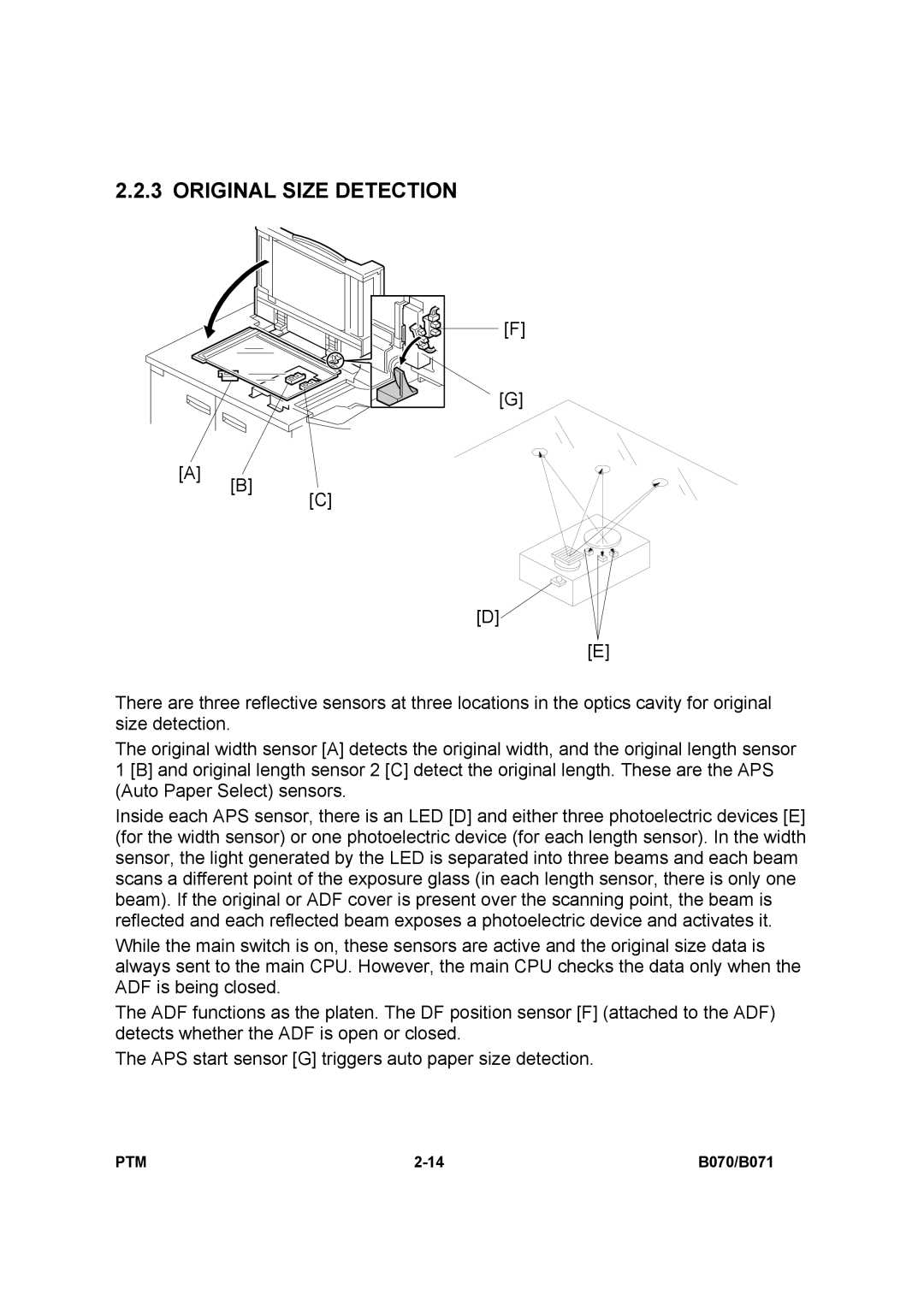
2.2.3 ORIGINAL SIZE DETECTION
[A] [B]
[F]
[G]
[C]
[D]
[E]
There are three reflective sensors at three locations in the optics cavity for original size detection.
The original width sensor [A] detects the original width, and the original length sensor 1 [B] and original length sensor 2 [C] detect the original length. These are the APS (Auto Paper Select) sensors.
Inside each APS sensor, there is an LED [D] and either three photoelectric devices [E] (for the width sensor) or one photoelectric device (for each length sensor). In the width sensor, the light generated by the LED is separated into three beams and each beam scans a different point of the exposure glass (in each length sensor, there is only one beam). If the original or ADF cover is present over the scanning point, the beam is reflected and each reflected beam exposes a photoelectric device and activates it.
While the main switch is on, these sensors are active and the original size data is always sent to the main CPU. However, the main CPU checks the data only when the ADF is being closed.
The ADF functions as the platen. The DF position sensor [F] (attached to the ADF) detects whether the ADF is open or closed.
The APS start sensor [G] triggers auto paper size detection.
PTM | B070/B071 |
